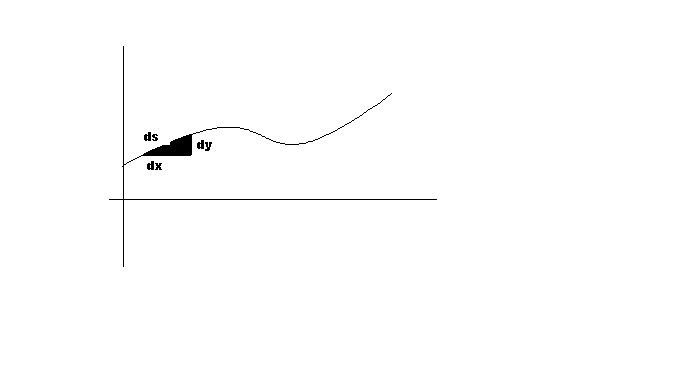Let →r be a position vector, where →r=f(t) i+ g(t) j
The velocity vector = →v = d(→r)/dt = f'(t) i + g'(t) j
The acceleration vector = →a = d(→v)/dt = f”(t) i + g”(t) j
To find angle between velocity vector and acceleration vector =>
Velocity vector’s angle with respect to horizontal direction =>
=>tan ø = g'(t)/f'(t)
Similarly acceleration vector’s angle with respect to horizontal direction =>
=>tan ß = g”(t)/f”(t)
Now angle between velocity vector and acceleration vector =
=>tan(ø-ß)= (tan ø – tan ß)/(1+tan ø • tan ß)
= ((g'(t)/f'(t) – (g”(t)/f”(t)) / (1+ g'(t) • g”(t) / f'(t) • f”(t))
=> ø-ß= arc tan ((g'(t)/f'(t) – (g”(t)/f”(t)) / (1+ g'(t) • g”(t) / f'(t) • f”(t))
How to find the trajectory of the particle =>
x=f(t)
y=g(t)
Eliminating t one can find the relationship between X and Y, which is known as the trajectory of the particle y(x).
To find the total distance traversed by the particle having position vector of →r= f(t) i + g(t) j
In above trajectory in a very small interval ds is the distance traversed in time dt
ds^2=dx^2+dy^2 from Pythagoras theorem
=> ds/dt = √(dx/dt)^2 + (dy/dt)^2
=> ds/dt = √f'(t)^2 + g'(t)^2
=> s = ∫ dt√(f'(t)^2 + g'(t)^2)
Limits can be put according to obtain the desired result.
